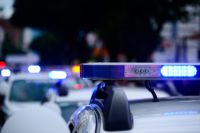5 Ways to Handle (and Prevent) Active Shooters

The deadliest active shooter incident by a single suspect was the recent murders in Norway, where one gunman shot dozens of students, trapped on an island with him, after setting off a bomb in the capital. To some, this has been classified as a terrorist act (Terror in Norway and Global Threats). Technically, that could be true, as he wanted to influence political views using violence on citizens.
The bottom line is that, regardless of motive, the episode was an active shooting. Once again, security professionals and law enforcement have to look at the incident and try to develop a way to prevent something similar from happening once again.
Looking at past active shooter cases, there are many, many differences between them. Some have happened in schools, including urban or rural and even an Amish school. Some have been in churches; universities; hospitals; restaurants; political rallies; grocery stores; office buildings; military bases or warehouses. Some have happened on the street or in neighborhoods, as the recent killings in Ohio by one gunman. It is harder to think of a place that hasn’t been the site of an active shooter. Too often, there has been little in the way of warning signs or early indicators. Perhaps some eccentric or bizarre behavior, but nothing that really warned others of what type of violence lied underneath. In other cases, the suspect has posted violent content or photos online only to be discovered by authorities after an incident.
Even the types of weapons are different. Obviously, when we talk about active shooters, we think of the guns involved. But there have been active attacks with other weapons, including knives or machetes. China has seen a spate of school attacks with multiple victims killed by a suspect with a knife instead of a gun.
There are some similarities too. Many of the shooters were stopped by violence as well; shot by either security, police or themselves. In some cases, bystanders tackled the gunman when they noticed him reloading or distracted. Often armed security staff or police have been the first to encounter the gunman, either shooting them or prompting them to commit suicide. In most of these instances, the gunman or men (it is usually men involved although not always), seem to have little concern about their own life and certainly no concern about others.
So what is the solution? How do we best go about the business of preventing these types of things from happening or stopping them quickly when they do?
-
Continue to educate the public about what type of behavior is or should be a warning sign and what steps to take. A large number of school shootings were prevented because other students notified authorities about suspicious or violent comments posted online or made in person.
-
Better training on how to respond during an active shooter scenario should be required. This involves all organizations conducting drills and including training on what staff or employees should do when there is an active shooter. General advice includes evacuating if possible, hiding if not and fighting back to protect yourself.
-
Organizations need to develop clear procedures on how to respond to violent behavior and threats. The policies and procedures serve as a way to reinforce staff training on how to avoid violence as well as how to react during an active shooter situation. Local police can help tailor the procedure to match their response.
-
All organizations should have some form of risk assessment and guidelines to help identify when they might be at risk. For example, schools should always review outings where a large number of students will be out of the building and in the community somewhere. At least within the school, teachers have practiced lockdown and lockout responses to threats. Even the risk of custody or parental disputes spilling over to field trips is greater with less control over access to students.
-
Staffing plans may need to include armed security or police presence. In the case in Norway, hundreds of students were on an island, isolated from normal law enforcement response. When Matthew Murray attacked New Life Church in Colorado, an armed security officer shot him, wounding him. He then took his own life. If security had not been present, the death toll may have been much higher than the shooting in Norway as Murray had 7,000 people trapped in a confined (or at least crowded) auditorium.
The strange thing about the potential prevention is the opposing views that come to the surface. Even though armed personnel have stopped many of the shooters or prevented them from going farther, there is a reluctance to allow armed personnel. Across the United States, many areas have looked at laws to allow individuals with concealed carry permits to remain armed while on campus. But too often these laws are rejected and law-abiding armed citizens are not allowed to carry a firearm. Even within the security industry, there has been a trend to move towards unarmed security personnel and away from armed staff.
Obviously, the decision about having armed security or allowing concealed weapons is a critical one with potential problems as well as benefits. The decision should be made after careful consideration of a number of specifics. There are financial considerations of course. What is the training level of the armed personnel? What about liability? Will the presence of armed security make visitors, employees or other attendees feel safer? The answer to that will fall on both sides of the line (armed or not) for almost all organizations. Some considerations include known threats, such as a high number of workplace violence incidents or high crime area. Other factors may not tie into past incidents at all, but consider the number of potential victims. Large crowds, especially in tight confines, should be regarded as a higher risk target. The New Life Church incident in Colorado or the large number of students ‘trapped’ on the island of Utoya in Norway with one gunman.
Active shooters are a very complex and difficult security issue and there is no easy or simple answer. It is time for organizations of all types to make sure that their staffs are trained on the basics of what to do during an active shooter situation. The second element is carefully evaluating the potential risks, threats, and what the response should be, including having armed security or police officers available.
For more information, visit http://businesskarate.blogspot.com/2011/08/how-to-handle-and-prevent-active.html
Looking for a reprint of this article?
From high-res PDFs to custom plaques, order your copy today!








